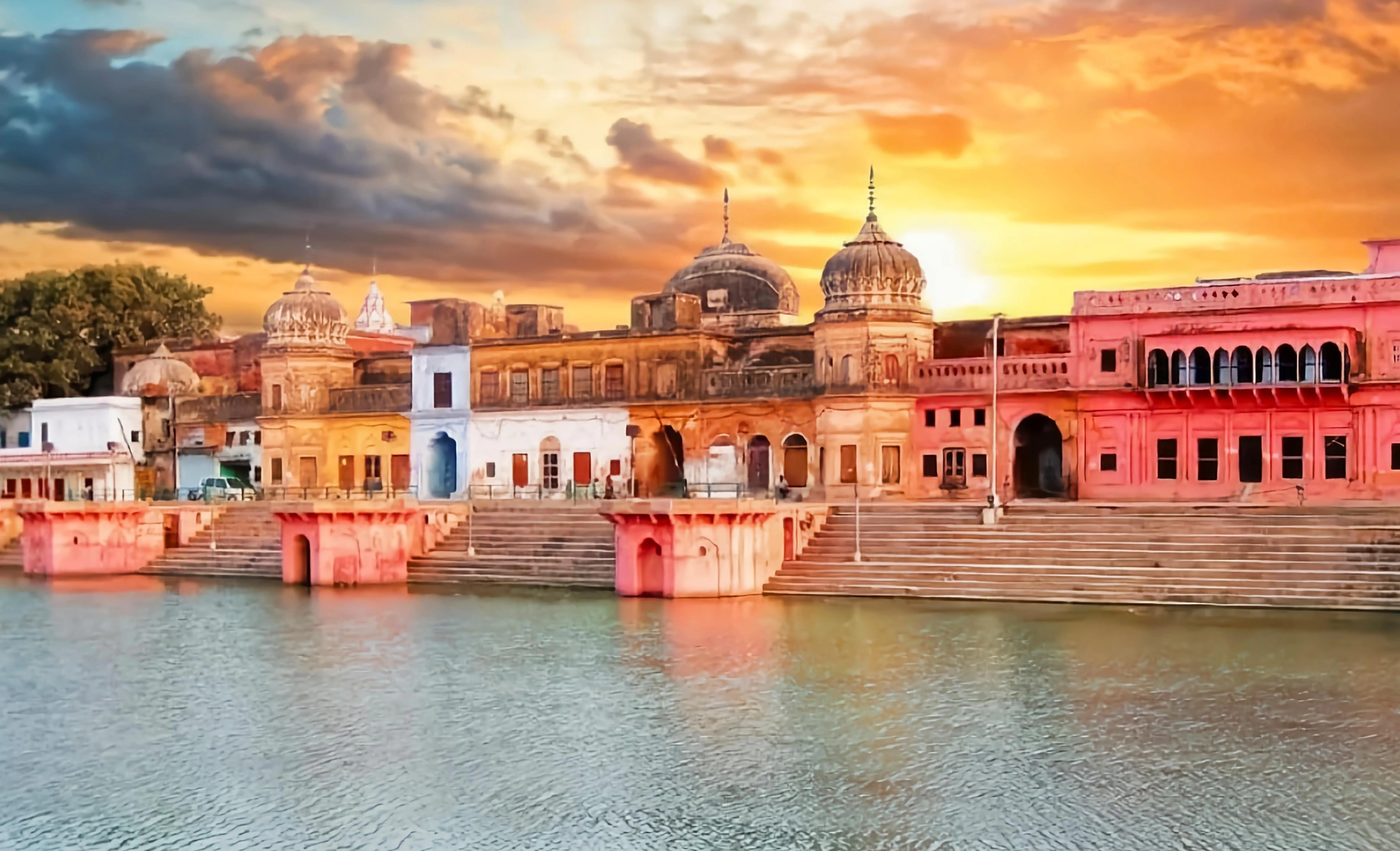
Swarg Dwar Temple
Swarg Dwar Temple, also known as Swargadwar Temple, derives its name from Sanskrit, where "Swarg" means heaven and "Dwar" denotes door or gateway. Thus, it translates to the "gateway to heaven." This temple is situated in the heart of Ayodhya, a place steeped in the epic of Ramayana, where Lord Rama's life and deeds unfold. Ayodhya, a city in Uttar Pradesh, India, holds immense spiritual significance as the birthplace of Lord Rama, revered as an incarnation of Vishnu in Hindu mythology. Among its sacred sites, Swarg Dwar Temple stands out, blending historical richness with mythological tales.
The significance of Swarg Dwar Temple is deeply intertwined with the Ramayana, an ancient Sanskrit epic narrating the life and adventures of Lord Rama. According to local belief, Swarg Dwar is the spot from where Lord Rama is said to have ascended to heaven at the end of his earthly incarnation. It marks the place where his mortal journey concluded, and he returned to his divine abode. The temple architecture exemplifies traditional North Indian temple styles, characterized by intricate carvings and sculptures depicting scenes from Hindu mythology. Devotees and visitors marvel at the craftsmanship and the serene ambiance that fosters contemplation and spiritual rejuvenation.
- Swarg Dwar Temple holds profound spiritual allure beyond its architectural splendor, attracting pilgrims who seek blessings and spiritual fulfillment in homage to Lord Rama.
- The temple complex features shrines dedicated to various deities, providing sanctuaries for prayer and meditation, fostering a spiritual environment for devotees.
- The journey to Swarg Dwar Temple symbolizes more than a physical pilgrimage; it represents a spiritual quest for transcendence and enlightenment, inviting reflection on the teachings of Lord Rama such as righteousness (dharma) and devotion (bhakti).
- Stories from the Ramayana resonate within its walls, inspiring visitors to emulate Lord Rama's virtues of truth and duty, reinforcing spiritual values and principles.
- As a cultural beacon, Swarg Dwar Temple preserves ancient traditions and fosters community among devotees, particularly during festivals like Ram Navami and Diwali, which draw thousands to Ayodhya in celebration of Lord Rama's birth and victory of light over darkness.
- Swarg Dwar Temple embodies Ayodhya's spiritual legacy, offering solace and upliftment to visitors. It stands as a testament to the enduring relevance of mythological tales and invites devotees to embark on a journey of inner transformation and spiritual awakening.
Browse All
- Hanuman Garhi Mandir
- Ram Janmabhoomi
- Kanak Bhawan
- Nageshwarnath Temple
- Sita Ji ki Rasoi
- Swarg Dwar Temple
- Sri Mani Ram Das Chhawni
- Raj Dwar Temple
- Tretanath Mandir
- Guptar Ghat
- Ram ki Paidi
- Military Temple
- Jain Temple
- Sankat Mochan Hanuman Mandir
- Badi Devkali Devi Temple
- Janki Ghat
- Matgajendra Temple
- Shri Kale Ram Temple
- Shri Ram Janki Birla Temple
- Makhauda Dham
- Raja Dashhrath Damadhi